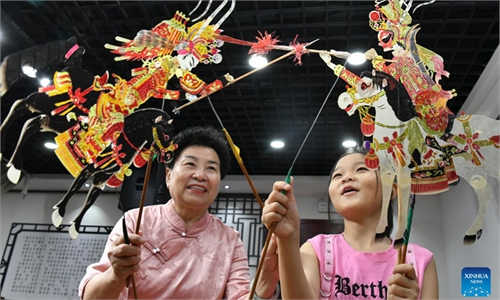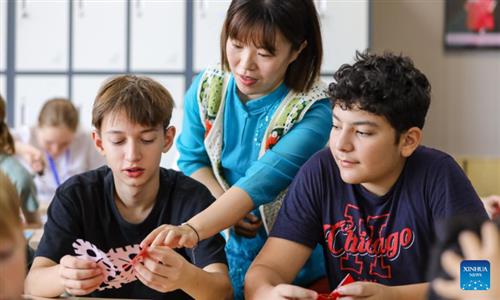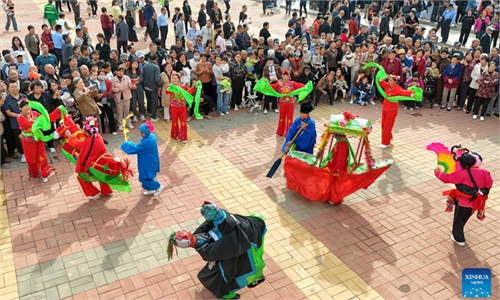ARTS / CULTURE & LEISURE
Ru Kiln heritage revitalized for modern life
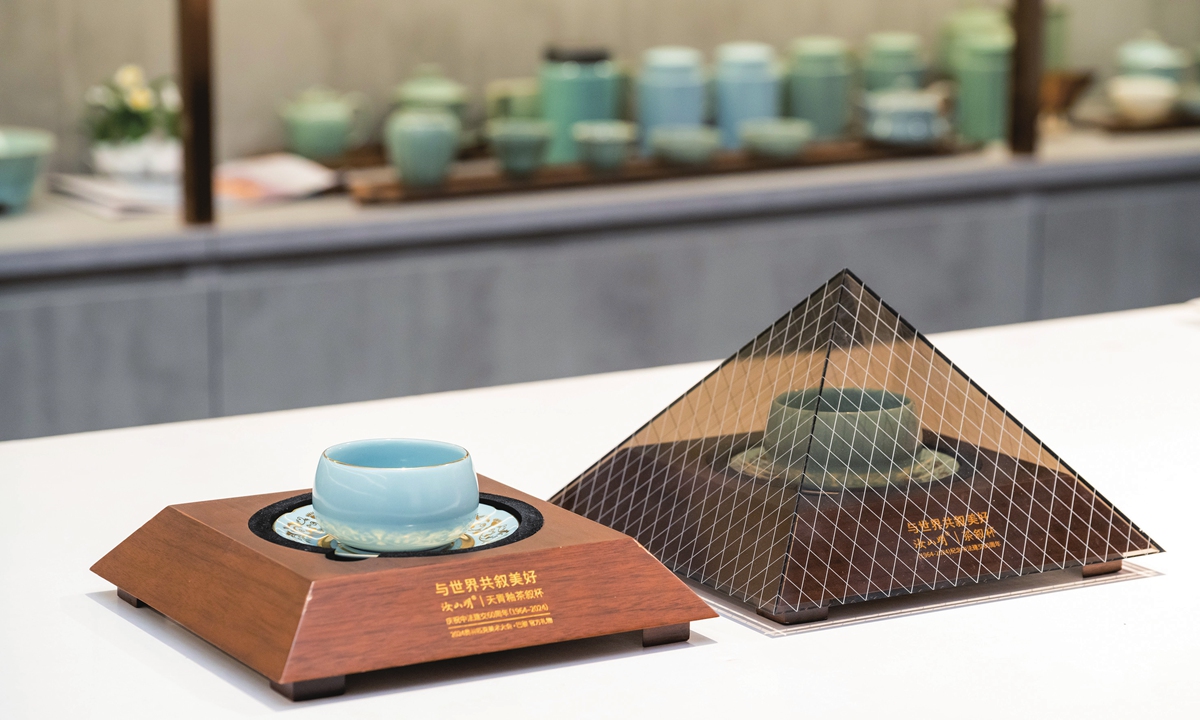
The Tianqing tea cup produced by the brand Rushanming Photos: Chen Tao/GT
Editor's Note:From exquisite craftsmanship to traditional Chinese medicine, and from solemn rituals to vibrant folk art, intangible cultural heritages weave a rich tapestry of Chinese identity, decorating the various facets of contemporary Chinese people's lives. In this series, the Global Times culture desk will walk readers through China's most renowned traditions. For centuries, the essential elements of Chinese intangible cultural heritage have been passed down from master to apprentice, from generation to generation. Today, the ancestral wisdom is being reinvigorated by a new generation of inheritors with creativity.
No museum in the world would be complete without a Ru ware, Chinese painting master Li Kuchan once said. This has become true especially after the world had an opportunity to appreciate the beauty of Ru Kiln during the past Paris Olympic Games.
Weeks after the 2024 Olympic Fine Arts Exhibition in Paris in August, Li Keming, an inheritor of the intangible cultural heritage of Chinese Ru porcelain firing skills, still remembers how foreign guests visiting an exhibition marveled at the beauty of the Tianqing tea cup produced by the brand Rushanming and how they admired the thousand-year-old Chinese cultural heritage transpiring from his works.
"The concept of 'inheritance of intangible cultural heritage: how to keep the memory of intangible cultural skills alive and refine specific techniques,' shares similarities with the Olympic spirit of 'moving upward and forward and never giving up,'" Li told the Global Times at his studio based in Beijing.
"What my fellow colleagues and I are doing is to find the key to exploring many possibilities between the historical context and traditional roots of the ancient Ru Kiln."
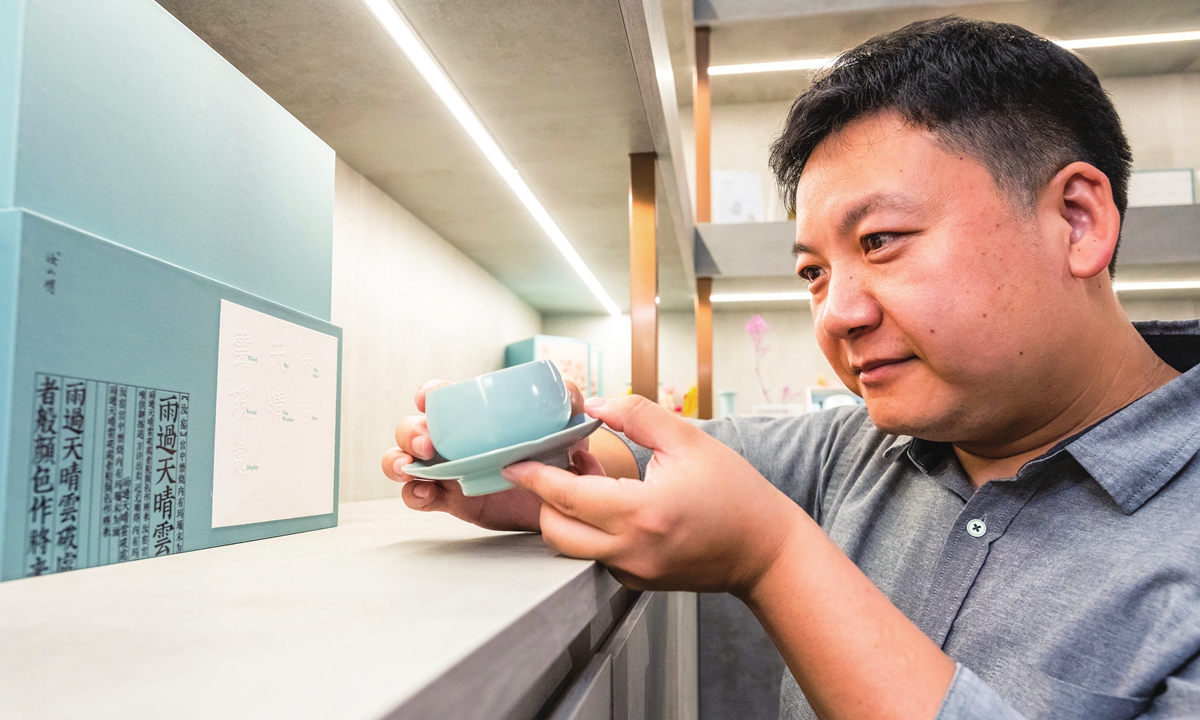
Li Keming, intangible cultural heritage inheritor of Chinese Ru porcelain firing techniques
Art of 'mud'The Song Dynasty (960-1279) was a golden age in the history of China's porcelain industry with five famous kilns Ru, Guan, Ge, Jun, and Ding, representing the pinnacle of porcelain artistry. While these five kilns couldn't encapsulate all the innovations of the era, they stood as a testament to the era's excellence in porcelain production.
The most renowned of these, the Ru Kiln, was revered for its simple design and elegant style, as well as its innovative aesthetic and a characteristic smooth glaze.
Despite being born in a family of Ru Kiln craftsmen, Li didn't become interested in the true beauty of its porcelains until he graduated from college and began his career in interior design.
"The more I studied Ru ware, the more I understood that it was such a brilliant cultural legacy in human history. That realization changed my mind," he recalled. What he once dismissed as mere "mud" became a passion and career.
Ru Kiln's heyday, spanning only two decades from 1086 to 1106, produced pieces so prized that fewer than 100 survive today. They are housed in prestigious museums like Beijing's Palace Museum, Shanghai Museum, and the British Museum.
Their unique beauty lies in their varying blue hues: sky-blue, greenish-blue, yellowish-blue and pale blue, complemented by intricate patterns like crab claws, ice crackling, or ink stains.
Li has since grappled with the challenge of making the thousand-year-old Ru Kiln relevant to modern life, and resonate with the young people today.
Facing new market demands
Concepts such as the revitalization of intangible cultural heritage and the branding of Ru made Li realize that for the tradition of Ru Kiln to survive and thrive in the future, it needs to be transformed into an industry with new consumption, market demand and supply.
"In some sense, the Song Dynasty's classics cannot be recreated, but we can continue the ancient porcelain-making spirit to create today's value," Li told the Global Times.
The city of Ruzhou, his hometown in Central China's Henan Province and where his family had worked on the heritage for decades, is the cradle of this particular type of porcelain. Li's journey toward revitalizing the heritage began with small items popular among youths, such as lucky dolls, and evolved into more functional designs like the Four-Season Flower Cups, which became instant hits, with several thousand sets being sold in just a few months.
Making a real porcelain piece is never easy as each piece needs to undergo at least 30 manual and technical processes. Although natural gas has been introduced to replace wood to keep the kiln temperature constant and secure high output, Li and other inheritors remain committed to traditional methods in order to transmit the original charm of the art and allow the public to better enjoy the authenticity of each piece.
In 2022, a misunderstanding over the ice crackle patterns on a Ru ware piece reinforced the need for better public education on the craftsmanship involved. While they worked with the National Museum of China on a pony figurine, they received negative feedback from a customer who requested to replace the pony figurine claiming that "the pony has cracks and so it is broken." This prompted them to provide additional information, explaining that the crackle patterns are not flaws but a signature feature of Ru Kiln porcelains, reflecting the unique artistry of this ancient technique.
"That's the charm, ice crackles. We need to let them know," Li said.
Despite technological advances, Li and other artisans remain committed to traditional methods.
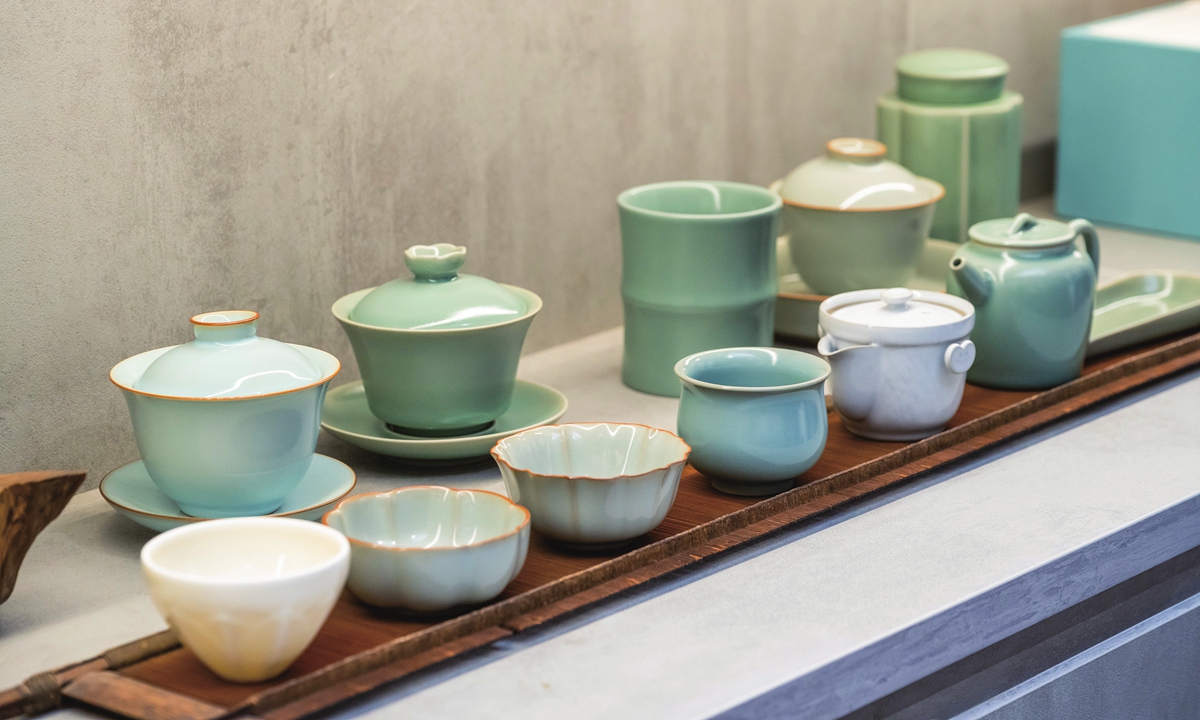
Ru Kiln products on display
Cultural messengersIn April 2023, when French President Emmanuel Macron paid a visit to Guangzhou, capital of South China's Guangdong Province, the cup set that he used to have tea at the Pine Garden close to the Baiyun Mountain were designed and created by Li.
Inspired by the Ru porcelain bowl stand that is now collected by the British Museum, Li designed the Tianqing tea cup, an item to be used for a Song-style tea ceremony.
In his eyes, the Ru porcelains can tell the world about the spirit and core value of traditional Chinese culture as well as offer a platform for cultural exchange like the exhibition in Paris did.
As an inheritor of Ru procelain, Li said that he not only wants to "restore tradition in terms of shape, but also better represent its culture conceptually." As Li puts it, the key to innovation and progress lies in his continued exploration of the historical context and traditional roots of the ancient Ru Kiln as well as the needs of modern life.

